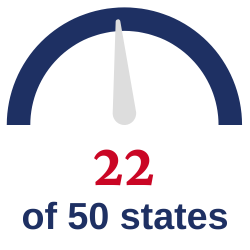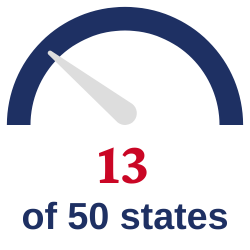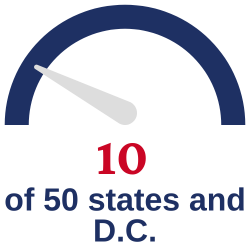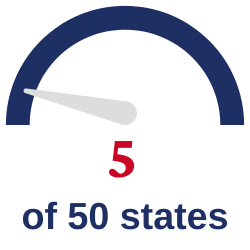The laws governing primary elections are complex. The following explains general information about primary elections at the local, state, and federal levels, as well as presidential primary elections. Different states and jurisdictions have different requirements to vote and participate in a primary election. To find out more about voting in your state, visit eac.gov/vote or contact your state or local election official.
In partisan contests, primaries are used to select which candidates will represent a political party in the general election. Nonpartisan primaries are used to narrow the field of candidates for a given office. In presidential primaries, voters are generally voting for party delegates, rather than for candidates themselves. Primary elections differ from caucuses, which also determine nominees for political parties but are party-run and subject to different rules than elections. Most primaries are administered by state and local election officials, although a political party may host and administer primaries in certain circumstances. The manner in which primaries are conducted varies by state.
Spreadsheet of State Primary Types and Associated Election Laws
Nonpartisan Primaries
Nonpartisan primaries are elections where candidates run with no party affiliation on the ballot. If a candidate for nonpartisan office does not win with a certain threshold (typically 50%), then the candidates with the highest number of votes advance to a general or run-off election. In some states, nonpartisan contests and ballot issues may be included on the same ballot as partisan contests. In other states, partisan contests are on a separate ballot.
Open Partisan Primary & Open to Unaffiliated Voters
44% of states have either an open partisan primary election or one that is open to unaffiliated voters. Open partisan primary elections generally allow all voters to participate, regardless of their political affiliation. Some states require voters to publicly declare their choice of party ballot at the polling place, after which the poll worker provides or activates the appropriate ballot. Other states allow the voters to make their choice of party ballot within the privacy of the voting booth.
Partially Closed & Partially Open Partisan Primaries
26% of states have either a partially closed or partially open partisan primary. In partially closed partisan primary elections, state parties decide whether they permit voters registered without a political party affiliation to participate in their primary elections. In partially open partisan primary elections, voters are generally allowed to vote for candidates with a different party than they are affiliated, but they must declare their party choice or their party selection may change their party affiliation.
Closed Partisan Primary
20% of states, as well as D.C. have a closed partisan primary. In general, closed partisan primary elections are elections in which only voters affiliated with the political party holding the primary are eligible to participate and voters receive a ballot listing only those candidates running for office for the nomination of the political party with which the voters are affiliated.
“Multi-Party” Partisan Primaries & Other Primary Modes
10% of states have other modes of holding their partisan primary elections that do not fit into open or closed categories. Some of these states have a "top-two" or “top-four” partisan format, where all voters receive a ballot with all candidates, regardless of the party affiliation or the voters or candidates. The two or four candidates with the highest number of votes advance to the general election, even if they have the same party affiliation. Other states have unique rules for conducting their primary election.
17-year-olds
Although the federal voting age is 18, over 20 states allow citizens who are 17 but will be 18 by the general election to vote in primary elections. Some states allow 17-year-olds to participate in local and state primaries only, while other states allow 17-year-olds to also vote in congressional primaries. In addition, 17-year-olds may be allowed to vote in presidential primaries or caucuses, depending on state law and political party rules.





